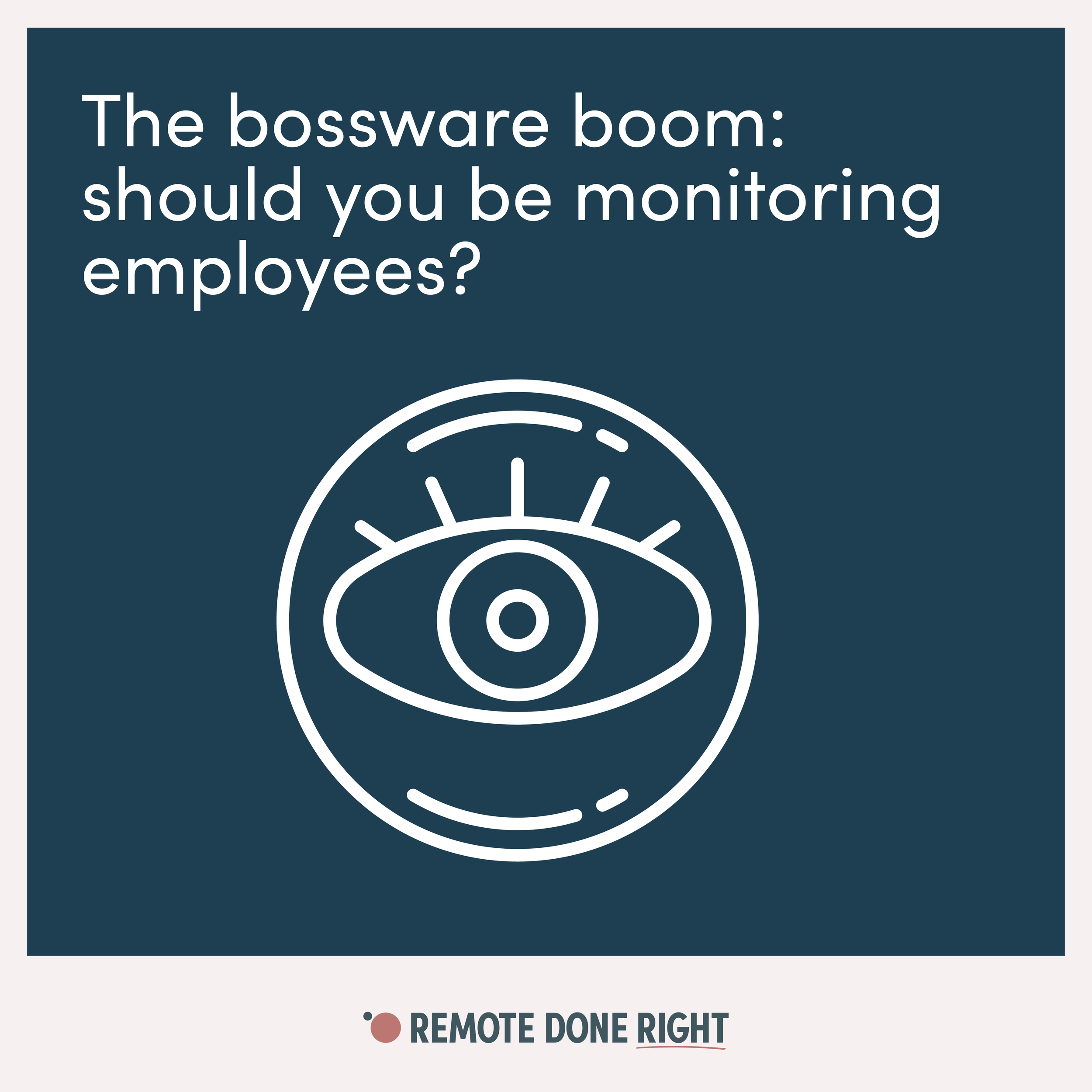The bossware boom: Should you be monitoring employees?
Surveillance software is on the rise among employers looking to track the productivity of their remote workers—but research shows that monitoring is not an effective substitute for good management.
Stop wondering what your team is doing and start building a remote leadership system that works. Download our free checklist to get started.
Why it matters
With remote work here to stay, it’s essential to consider how to keep an eye on employees who are out of sight.
Employee monitoring software has been widely accepted as a solution. As early as 2020, almost 60% of small-to-medium businesses in Australia used employee monitoring software (Hammond, 2020).
However, this software takes a toll on workplace culture. Employees perceive surveillance as indicative of a lack of trust, and workplaces that use monitoring software generally see lower job satisfaction and employee engagement, and higher rates of attrition (Elliott, 2024).
Take action
Before jumping on the bossware bandwagon:
Determine the best ways to measure productivity and employee success in your particular industry. Is surveillance going to produce meaningful results?
Review your appetite for flexibility, and how this might affect the usefulness of monitoring software. Are you open to employees being away from their keyboards for periods, provided they meet their targets? If yes, what will a record of mouse movements or keystrokes tell you?
Consider the cost of software subscriptions, legal consulting fees, and time spent reviewing the resulting data. Would bossware offer a net financial benefit to your business?
Regardless of whether you choose to use surveillance software, make sure that you communicate productivity expectations to employees, so that both remote and in-office workers understand how their work is being evaluated.
Learn more
Be aware that using bossware can result in a number of legal issues, depending on what kind of software you use, whether your employees use their own devices, and which state you operate in. Do your research and, most importantly, be transparent.
Join our community
Sign up to our newsletter and join our community of people committed to making remote work fair and productive.
Go deeper
Elliott, B. (2024). Return-to-Office Mandates: How to Lose Your Best Performers - Your organization’s highest-performing employees want executives to focus on outcomes and accountability, not office badge swipes. MIT Sloan Management Review. Link
Hammond, A. (2020). 59% Of Aussie SME Business Leaders use Employee Monitoring Software. Link
Miller, K. (2023). Are you being watched while working? What hybrid workers need to know: Companies may be monitoring their employees working remotely, raising questions about the ethics and legality of surveillance. UNSW NewsRoom. Link
Negron, W. (2021). Little Tech Is Coming for Workers: A Framework for Reclaiming and Building Worker Power. Link
Purtill, J. (2022). Employee monitoring software became the new normal during COVID-19. It seems workers are stuck with it. ABC News. Link
Sibthorpe, C. (2023). Woman sacked for not typing enough hosted TikTok lives while working from home. news.com.au. Link
Thiel, C., Bonner, J., Bush, J., Welsh, D., & Garud, N. (2022). Monitoring employees makes them more likely to break rules. Harvard Business Review. Link

